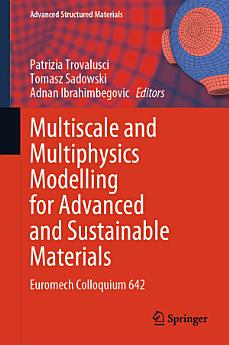Multiscale and Multiphysics Modelling for Advanced and Sustainable Materials: Euromech Colloquium 642
About this ebook
Various types of complex materials, made of very different constituents, are used nowadays in engineering practice: particle or fibrous composites; laminates; green composites with natural fillers and industrial or urban recyclable materials; nanomaterials; architecture material; in general complex multiphase materials with a complex internal structure including: porosity, reinforcement in the form of short fibres and particles of various properties, shapes, and sizes, filled in different media. It is widely recognized that important macroscopic properties such as the macroscopic stiffness and strength are governed by multiphysics processes (e.g. damage due to heat transfer or fluid penetration, crack propagation under thermal shock in ceramic/metallic matrix composites, etc.) which occur at one to several scales below the level of observation. A thorough understanding of how these processes influence the reduction of stiffness and strength is a key to the analysis of existing, and the design of improved, complex materials. The colloquium was centred on “Multiscale and Multiphysics Modeling of Complex Materials”, with attention to the constitutive aspects concerning complex materials, so defined for the presence of internal structure at different scales (nano/micro/meso) and nonlinear constitutive behaviour (plasticity, damage, fracture, etc.).
About the author
Patrizia Trovalusci, Ph.D., is a full professor of Solids and Structural Mechanics. Patrizia Trovalusci is the director of the Ph.D. Programme in Structural and Geotechnical Engineering and of the Doctoral School of Civil Engineering and Architecture at Sapienza University of Rome and is an author of more than 200 articles in International Journals, Volumes, Conference Proceedings, and more. Patrizia Trovalusci is an organizer of several Conferences, Minisymposia, International Advanced Courses on Solid Mechanics and Structures and guest editor of many special issues in international journals. Patrizia Trovalusci is an associate editor and/or member of Editorial Boards of International Journals; Patrizia Trovalusci is a member of International Scientific Societies, International Evaluations Committees for researchers recruitments; Patrizia Trovalusci is a remote referee of international commitments for funding assignment. Patrizia Trovalusci is a principal investigator of competitive Research Projects.








